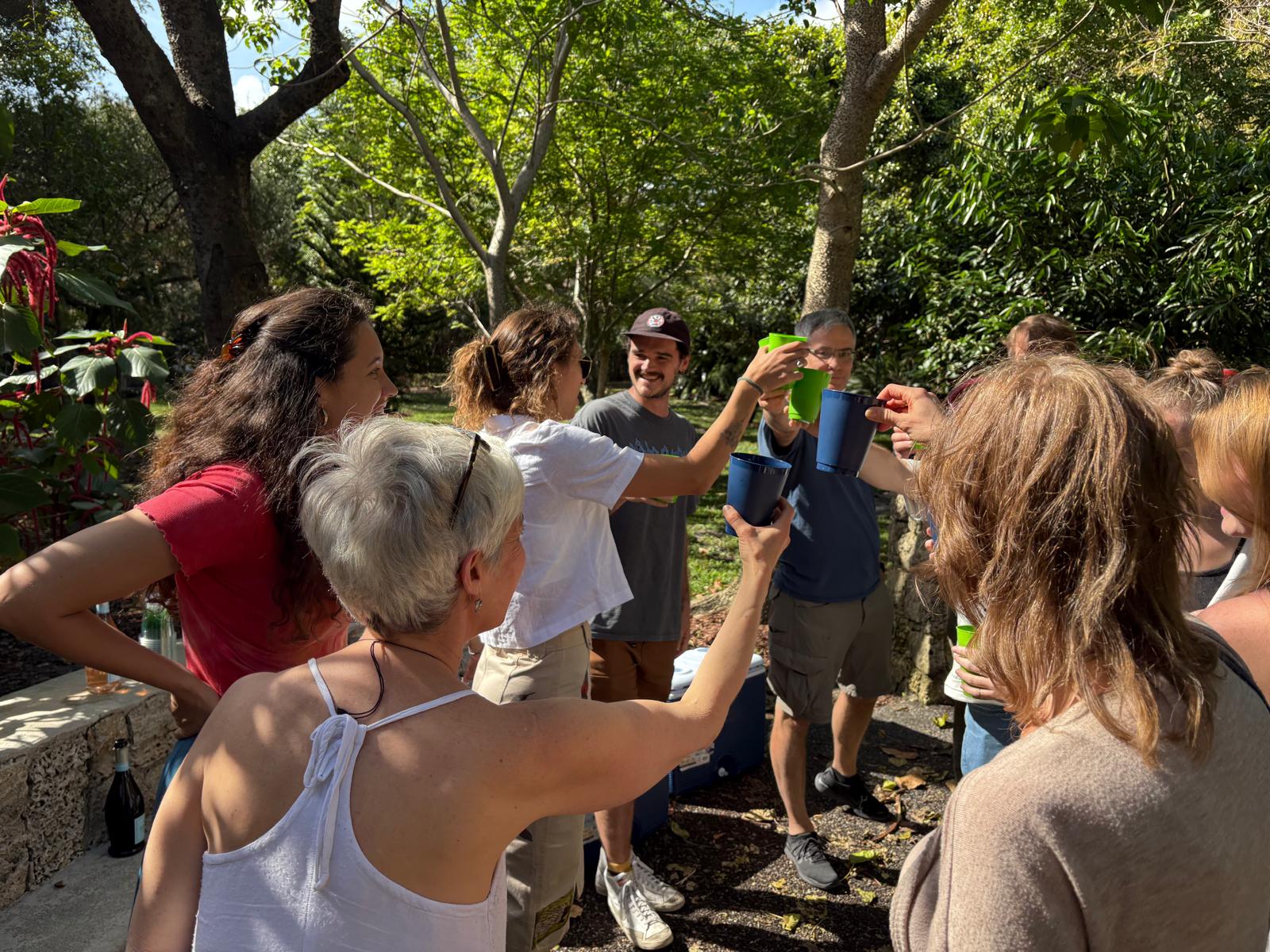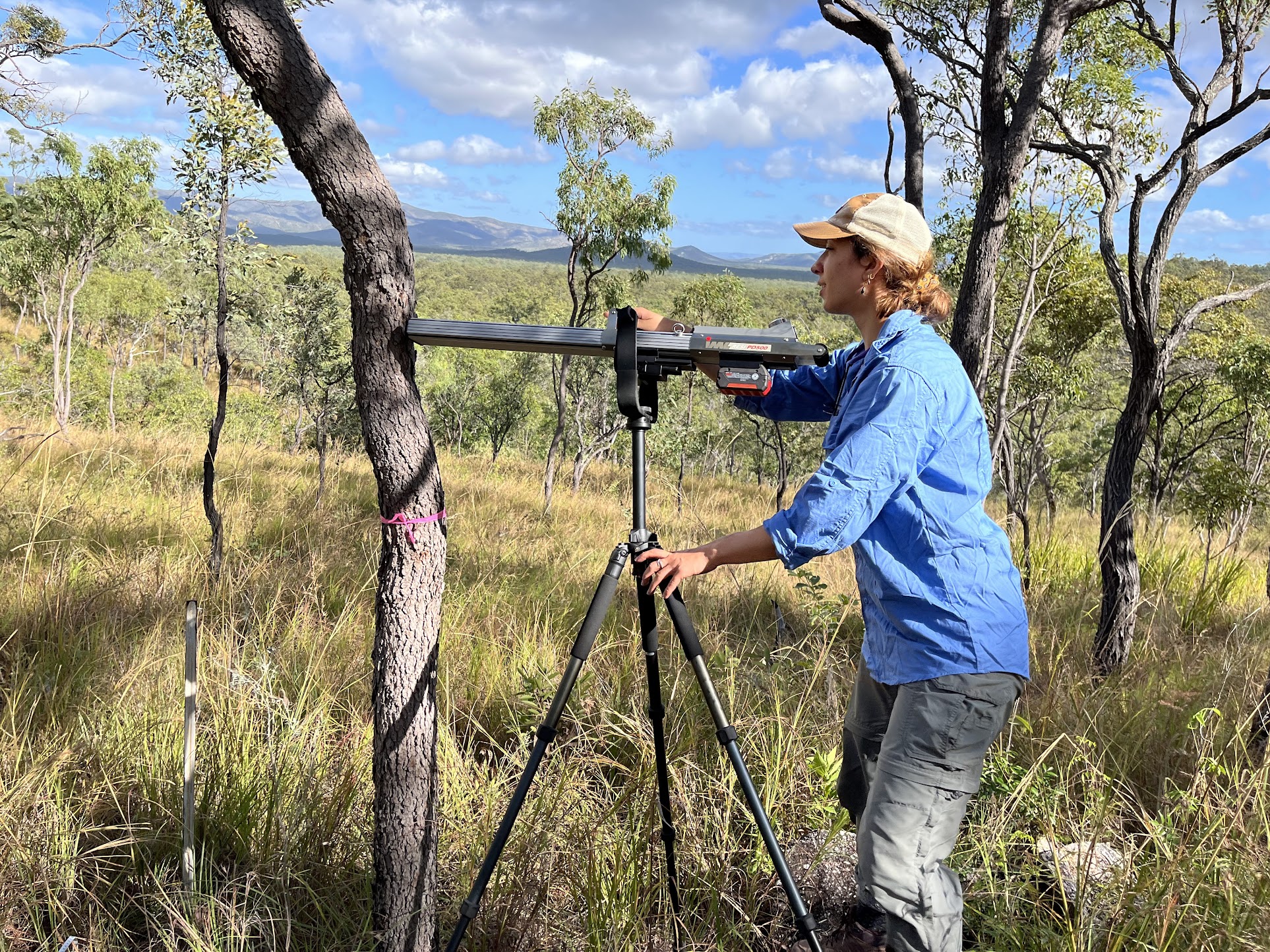New publication: a destructive harvest study in far North Queensland
Written on June 26th, 2024 by Abbey Yatsko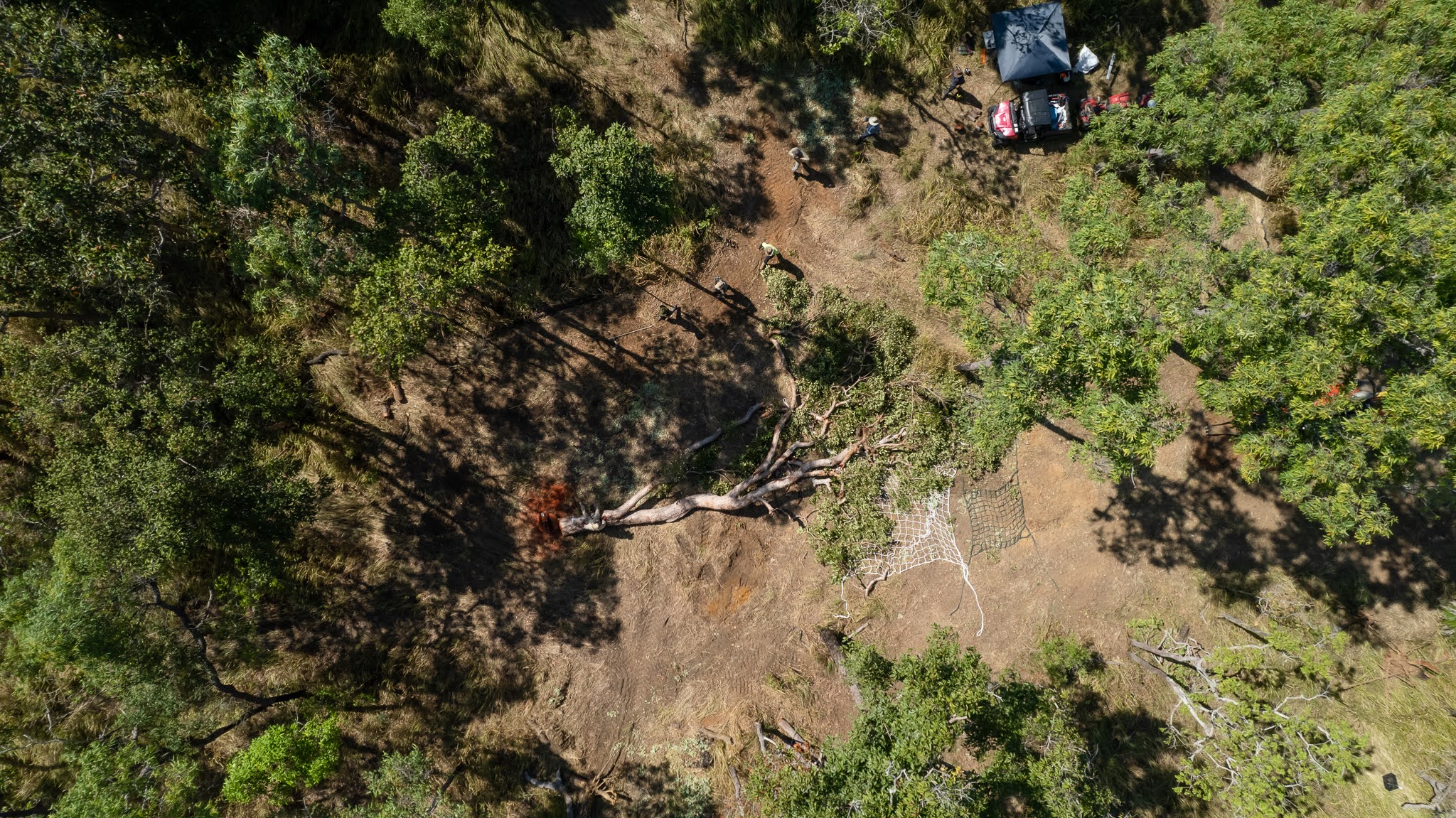
In October 2022 a team of researchers and I set out on a quest to laser scan a bunch of trees, cut them down, and inspect their insides for termite and microbial damage. The result was a lot of hard work in a remote Cape York landscape, many new insights on the process of internal stem damage, and a fresh new paper out in Methods in Ecology and Evolution, which you can find here!
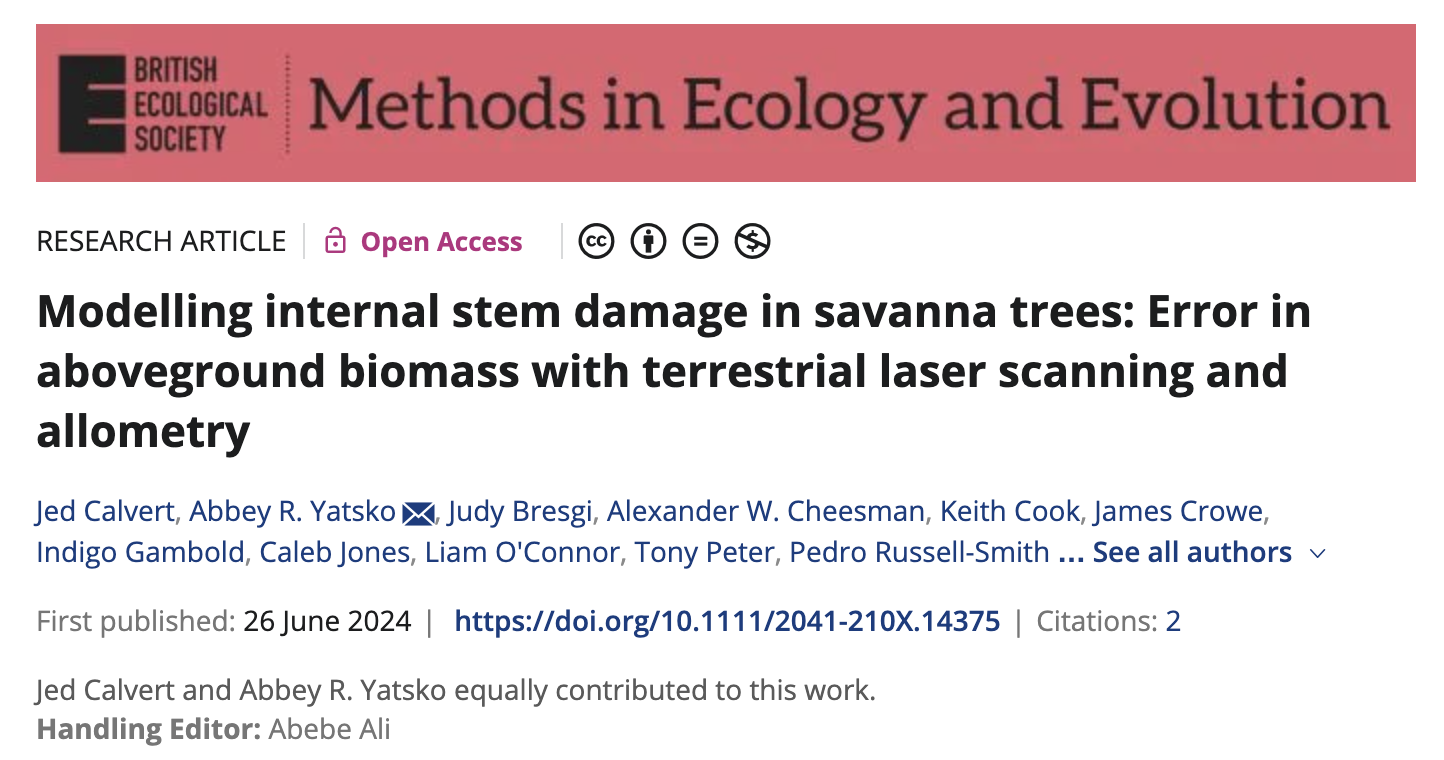
In short, we found that internal tree hollowing impacted about half of the trees in our study, and was greatest at the tree base, tapering off as we reached the crown branches.
Also, we found that terrestrial laser scanning was a very accurate tool for estimating aboveground tree biomass. Compared to allometric models, which are often applied in forestry and carbon measurement, terrestrial laser scanning had the lowest bias in aboveground biomass estimates.
We tested a range of allometric equations, and there was variable performance amongst the models – some offered surprisingly strong estimates, close to that of the terrestrial laser scanning.
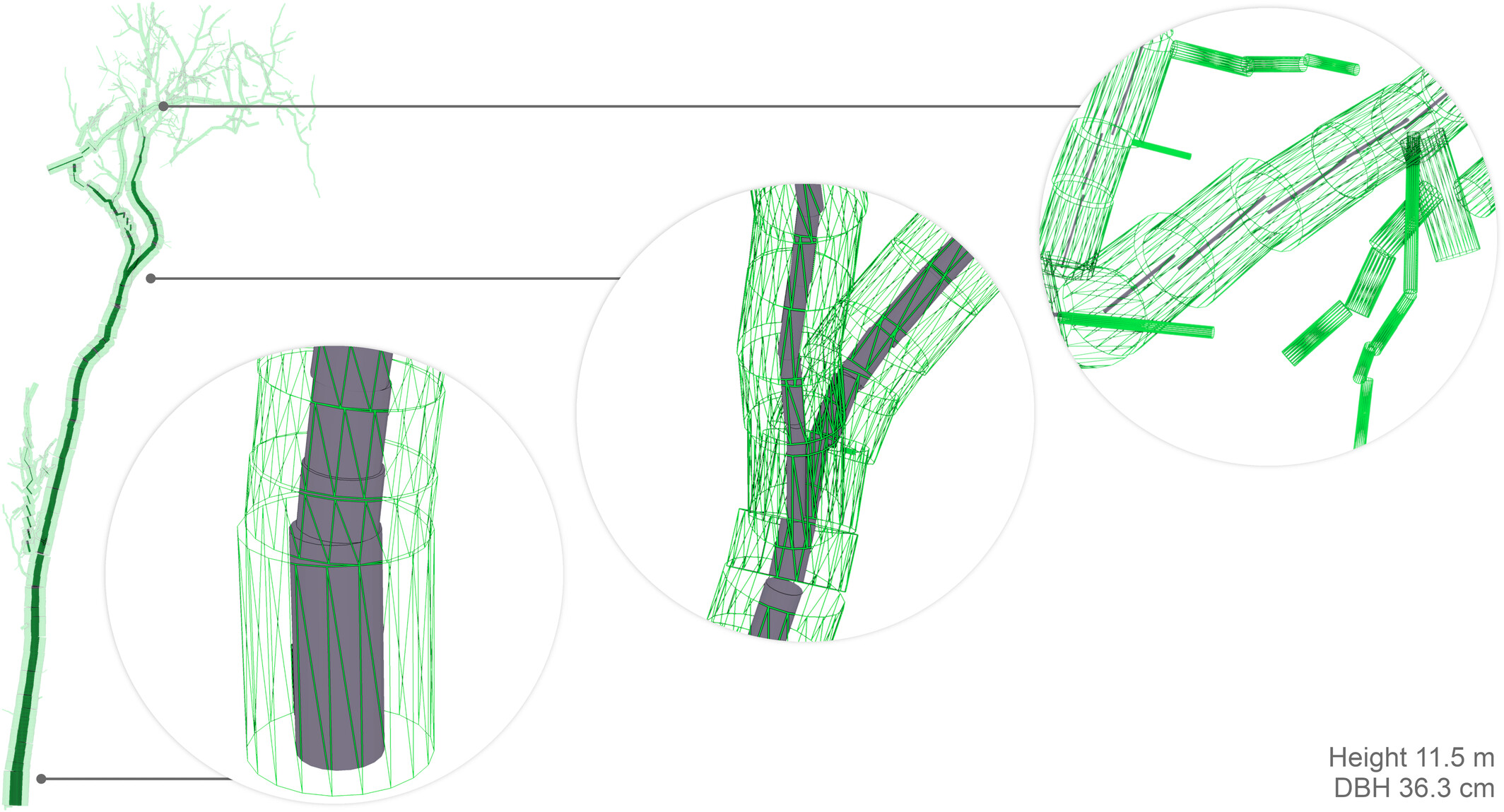 Internal stem damage modelled throughout a terrestrial laser scanned tree
Internal stem damage modelled throughout a terrestrial laser scanned tree
Lastly, we explored how damage on the inside of trees impacted biomass estimates. Unsurprisingly, we found that when biomass was estimated using terrestrial laser scanning, large trees with significant hollowing were overestimated. Interestingly, the allometric models were less affected by internal damage, potentially due to hollow trees being included in the datasets from which such models were built.
It’s quite exciting to have this paper out there, as it marks the first of my Ph.D. chapters to be published. Thanks to the whole team that was involved, and especially my co-author Jed for his support along the way.
 Photo of the team and cover photo courtesy of Indi Gambold
Photo of the team and cover photo courtesy of Indi Gambold
